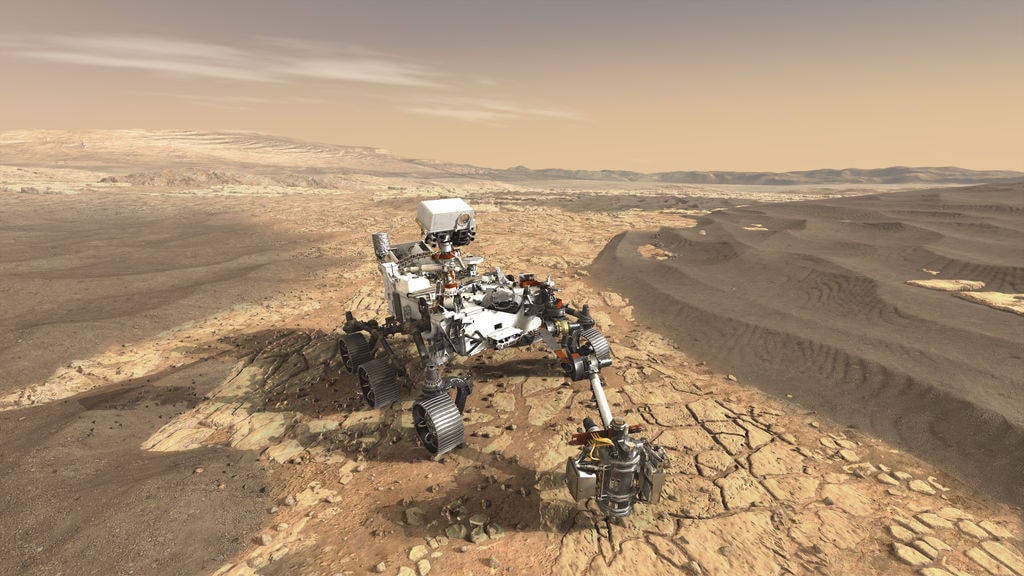NASA’s Perseverance is having trouble with one of its instruments – which could mean the rover will no longer be able to zap rocks with its laser.
The issue concerns the Scanning Habitable Environments with Raman & Luminescence for Organics and Chemicals (SHERLOC) instrument, mounted on the end of the rover’s robot arm. The instrument has cameras, a spectrometer, and a laser to search for compounds that might hint at past microbial life.
However, one of the two covers that keep dust away from SHERLOC’s optics has recently begun malfunctioning. According to NASA, on January 6 “the cover was oriented in such a position that some of its operation modes could not successfully operate.” A hint that there were problems came in the January 25 rover blog in which the team noted that issues with SHERLOC prevented the robot arm from being stowed and the rover moving on.
The robot arm was subsequently stowed, but the game was afoot to work out what was wrong with SHERLOC.
The cover has since partially opened, and the team on Earth are trying various operations to make it work as designed – including varying the amount of power fed to the cover’s motor. At present SHERLOC can’t use its laser on rock targets, nor collect spectroscopy data.
However, the Wide Angle Topographic Sensor for Operations and Engineering (WATSON) is working. While WATSON is part of the SHERLOC instrument, it operates through a different aperture, so imaging microscopy can still be attained.
SHERLOC and WATSON. We see what you did there, NASA.
Should engineers be unable to come up with a solution, there is some overlap with the other instruments on the rover, meaning that science objectives should still be achieved. It is also worth remembering that having spent more than 1,000 sols on Mars, Perseverance is quite some way past its initial mission expectancy.
Its sibling, the Curiosity Mars rover, is still trundling along after more than 11 years on the surface of the red planet. NASA engineers are awesome at this stuff.
The issue with SHERLOC was noted at around the same time as Ingenuity – the Mars helicopter brought to the surface of the planet by Perseverance – sustained rotor damage during its final flight. That damage led NASA to decide it was time to retire the device rather than risk further expeditions into the thin Martian atmosphere.
As is increasingly common with NASA’s missions to Mars, Ingenuity also far outlived all expectations before its retirement.
If SHERLOC does remain in an unusable state, the rover has other instruments that can also perform spectroscopy. These are the SuperCam and the Planetary Instrument for X-ray Lithochemistry (PIXL). ®

Dr. Thomas Hughes is a UK-based scientist and science communicator who makes complex topics accessible to readers. His articles explore breakthroughs in various scientific disciplines, from space exploration to cutting-edge research.








